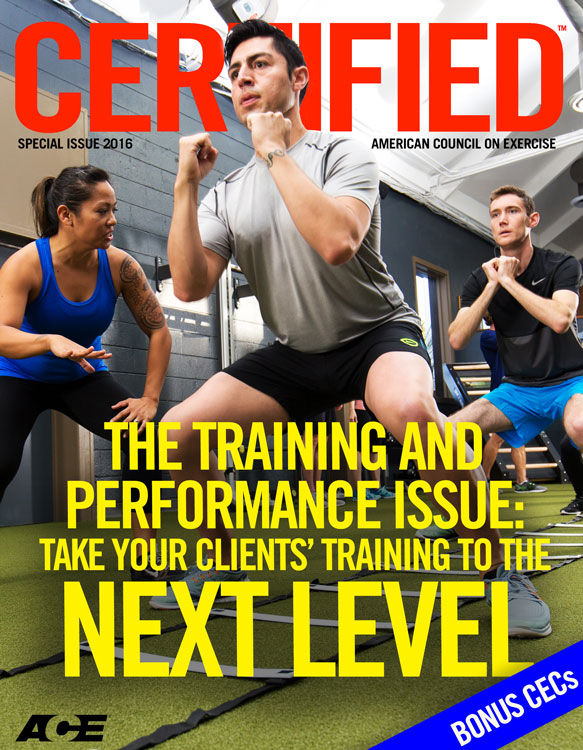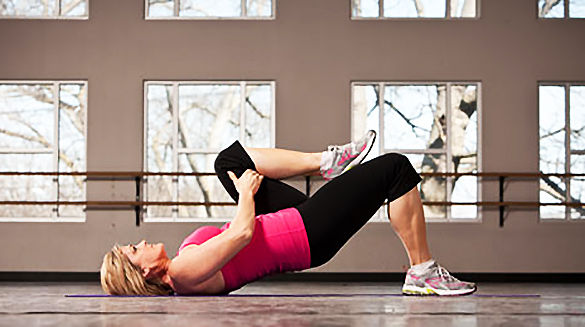
If I were to ask you to show me a lunge, a push-up or a squat, I would bet all of the money in the world that 99.9 percent of those reading this would show me the exact same versions of those exercises. Although you would be completely accurate in what you demonstrated, you would also be demonstrating what I believe to be a blind spot that our industry has when it comes to program design. That blind spot is preconceived definitions of what each of those exercises (and many others) look like and how and when we would or would not use them.
The Movement Variability Matrix (Figure 1), which we use at Function First, based in San Diego, Calif., aims to address that blind spot. The Movement Variability Matrix features “ingredients” that can be added, subtracted or combined to modify a given exercise for the purpose of progressing, regressing or simply adding needed variability with similar demand. The Movement Variability Matrix can also be helpful in recognizing the variables of any given exercise and evaluating their impact on client success.
Figure 1

The matrix model has been used across many fields of study to communicate interrelated topics. In this article, you will learn how to use the it to provide a framework for developing clearer and more expanded options when designing corrective exercise programs for your clients.
Let’s start with a brief example of how the Matrix works in practice, before digging into the details of how to use it with your clients. Juan is 56 years old and a former skier with osteoarthritis in both knees. He has skipped the last three ski seasons due to his knees, but is back in the gym and determined to get back in shape for the upcoming ski season. When he was younger, lunges helped him tremendously while preparing for ski season, and he knows how important single-leg work is to his sport. But for the past 10 years, lunges have hurt his knees and he avoids them at all costs because he fears his knee pain will get worse.
Through our interviewing process, we learn that Juan has one very distinct view of what a lunge is. Just one. So I ask Juan if he would be interested in doing a lunge to help his skiing that didn’t look or feel anything like the lunge he is used to performing. And, I tell him, this lunge won’t hurt his knee. Juan is skeptical, but he agrees.
By applying the Movement Variability Matrix, we were able to help Juan discover a lunge to build movement confidence in his knees, while also benefiting from single-leg work. Here is how we did it:
- We changed Juan’s relationship to gravity by having him maintain a hip hinge with his hands on a bench to support a percentage of his body weight.
- We reduced the neural complexity of the exercise by keeping both his feet and hands fixed throughout the movement.
- We changed the plane of motion from the sagittal plane to the frontal plane.
- We increased the cognitive input of the exercise by adding more coaching cues and having him focus on some intrinsic awareness around the use of his hip muscles.
As Juan becomes comfortable with the motion and stronger in his single-leg capacity, we apply the Movement Variability Matrix to progress and/or regress where necessary by drawing from any or all of the components of the Matrix.
Understanding How the Body Responds to Stimuli
It is important to understand that there is nothing linear about the way the human body behaves and responds to stimuli. There are constant and massive numbers of biological processes occurring within our bodies at all times. Simultaneously, there are ongoing cognitive processes in our brains as we interact with ever-changing environmental conditions. If we can appreciate this dynamic-systems view of the human movement experience, it is easier to appreciate the limitations of a progression/regression strategy based on simply adding or subtracting work.
As movement professionals, the ability to make safe and productive modifications to a client’s exercise program during the execution of an exercise is empowering for both you and the client. This could not more true than when using corrective exercise while working with clients who are older, in chronic pain or post-rehabilitation. These populations may have movements that are provocative to symptoms, create apprehension or fear and lead to compensatory patterns to avoid reproducing symptoms.
The field of corrective exercise has grown and evolved within the fitness industry over the past 20 years. As the science helps us better understand the human body and its responses to stimuli of all types and durations, we can design more effective programs and be clearer on our objectives for both the client and ourselves.
All programming, be it corrective or otherwise should be designed around clear objectives. The purpose of a corrective program is, ultimately, to reduce mechanical stress, improve the quality of movement and increase the movement confidence of the client. A potential pitfall facing many trainers is a view that an exercise or exercise program can be only corrective in nature (and therefore assumed to be remedial in nature) or the program is for fitness in the traditional sense (fat burning, strength building, power, etc.). This understandably creates a challenge when a corrective program needs to be progressed or a more traditional program needs to be regressed.
Moving Beyond Volume-based Variables
The most commonly used variables for exercise are volume-based:
- Sets
- Repetitions
- Duration
- Load
- Intensity
- Time under tension
- Tempo
Although these variables are important, there are other options for progressions or regressions when the need is not just for an increase or decrease in volume. The Movement Variability Matrix illuminates ways a corrective movement can be either progressed or regressed based on additional variables that are not directly related to volume.
A major principle behind this model is that progressions and regressions do not always have to follow a direct, linear path from easy to hard or hard to easy. In fact, by not following a direct linear path, the client is given the opportunity to be adequately challenged along with the accompanying variability that is so beneficial to the motor and musculoskeletal systems.
Each outer cell of the Matrix represents a variable present in all movements (see Figure 1). The centerpiece represents the posture and/or movement from which the exercise will be progressed or regressed. Examples of baseline postures include:
- Supine lying
- Prone lying
- Side lying
- Quadruped
- Kneeling
- Half-kneeling
- Sitting
- Symmetrical standing
- Asymmetrical standing
- Split stance
- Single-leg standing
Examples of baseline movements considered to be global include:
- Squatting
- Lunging
- Crawling
- Rolling
- Planking
- Warding
Examples of baseline movements considered to be local include:
- Hip (adduction/abduction, flexion/extension, internal/external rotation)
- Thoracic spine (rotation, lateral flexion, flexion, extension)
- Ankle/subtalar joint (dorsi/plantar flexion, inversion/eversion)
- Scapulothoracic joint (abduction/adduction, elevation/depression, upward/downward rotation)
Following are brief explanations of the elements of the four cells, as well as examples of how each once can be applied.
Relationship to Gravity
Gravitational forces acting on the human body will engage different muscle groups and joint angles to produce movement and stabilization strategies based on the position of the body. Any positional change relative to gravitational forces will affect the body’s output.
Neural Complexity
Sensory input (proprioceptive, tactile, visual, auditory) and the assimilation of that information leads to a motor output. Neural complexity is influenced by both the amount of sensory input and the movement goal.
Planes of Motion Involved
In principle, nearly all movements involve motion in multiple planes, but we can generally identify a plane of motion in which the majority of the global movement occurred. For example, a golf swing is considered a transverse plane motion because of the spinal and hip rotation, even though the spine and hips also go through sagittal and frontal plane movement during the swing.
Cognitive Input
This refers to the amount of verbal coaching and continuous feedback provided by the trainer or coach for the client to successfully execute the desired movement. This also refers to how much the client is using intrinsic attention (which is focused within his or her body) during a movement versus extrinsic attention (which is focused outside of the body on external cues or goals).
Practical Application of the Movement Variability Matrix
A nonlinear benefit to applying the Movement Variability Matrix options to exercise modification is that the elements can be selectively modified as needed, with one or more element being progressed while simultaneously one or more being regressed.
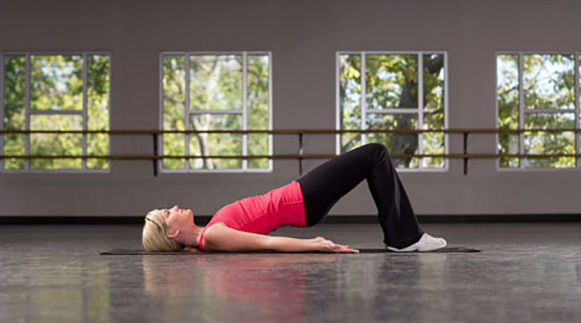
For example, consider an exercise such as a glute bridge. Clients love how the exercise feels on their glutes and hamstrings, but at the top of the movement there is pronounced lower-back pain with the increased lumbar extension. A simple modification is to instruct the client to not go as high to avoid the pain. However, the client does not get the same sense of accomplishment or challenge from this type of linear modification.
Here are potential options using the Movement Variability Matrix:
Relationship to Gravity
The following could be considered regressions:
- Raise the shoulders and support them on a stability ball, BOSU or Core-Tex.
- Raise the feet and support them on a stability ball, BOSU or Core-Tex.
Neural Complexity
The same modifications listed above could also be considered progressions in neural complexity due to the liable surfaces. An alternate option is to regress the neural complexity and support the shoulders on a bench.
Planes of Motion Involved
The glute bridge is a sagittal plane-dominant movement. The use of a stability ball, BOSU or Core-Tex increases the planes of motion involved because of the multidirectional stabilization requirements. The dominant plane of motion can also be changed from sagittal to transverse by going from two legs to one leg and allowing the pelvis to drop on the unsupported side on the descent and raise to level with the opposite side at the top of the movement. This creates rotation at the thoracic spine, hip and knee.
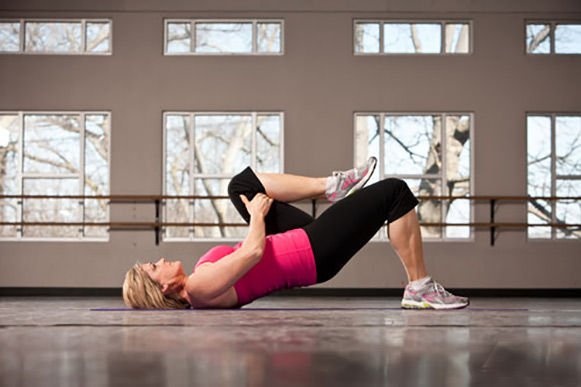
Cognitive Input
The more comprehensive an exercise becomes, the less cognitive input should be involved. With the simpler baseline movement of the glute bridge, you might instruct the client to “squeeze the glutes” at the top to enhance proprioceptive awareness of the movement (intrinsic focus). You may also add ongoing coaching cues during the execution of the exercise, such as timing of breaths or relaxing the shoulders. It is reasonable to provide intrinsic cues that require cognitive attention because the basic execution of the glute bridge is reasonably simple.
Conversely, if more neural complexity and planes of motion are added to the exercise, the simple glute bridge becomes more comprehensive. Adding or maintaining the same cognitive input interferes with the recognition of reflex cues from the proprioceptive system and the necessary self-correction necessary for motor learning.
The Movement Variability Matrix in Practice
Now that you have a better idea of how to use the Movement Variability Matrix, let’s take a look at another sample client: Jenny is a 44-year-old mother of three and a former amateur golfer. She has been inconsistent with her fitness over the past three years after multiple episodes of back pain. She wants to get fit again and, ultimately, play golf again, but she feels the spinal rotation is what caused her pain. She has been diagnosed with degenerative disc disease and had several courses of physical therapy. With the most recent improvements she’s experienced through physical therapy, she has been cleared for exercise at the gym.
Jenny knows that to be able to get back to golf, she has to be able to rotate. But the thought of spinal rotation causes her to tighten up and guard. In this example, the baseline movement is standing spinal rotation.
Let’s look at how the Movement Variability Matrix can be used to meet Jenny's needs and begin moving her toward the spinal rotation necessary for golf. The goal is to introduce spinal rotation in a safe, conservative way that allows her to experience the movement in the absence of pain, apprehension or guarding. The linear approach to this goal might be to produce the swing motion at a slower speed or reduced range of motion. However, the challenge with this approach is that regardless of slowing down or reducing the range of motion, the nervous system is sensitized to this being a pain-provoking movement, which potentially leads to pain, guarding and apprehension.
Using the Movement Variability Matrix, we can explore options that allow us to introduce spinal rotation with Jenny in a safe and novel way. Here is one sample exercise selection and how the Movement Variability Matrix helps uncover this option.
Supine Hip Rotations With Stability Ball. The client is lying on her back with her legs over the ball and hips and knees at approximately 90 degrees. Her arms are out to her sides at shoulder level and palms down. The client is instructed to start with small, rhythmical motions from side to side. As the tissue becomes more compliant and the nervous system becomes more receptive, the motion increases to a maximum of 45 degrees in each direction.
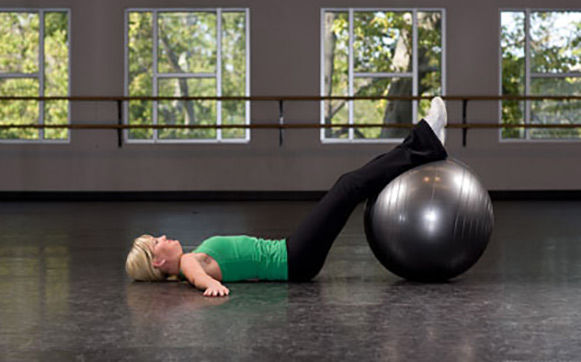
Relationship to Gravity
When lying supine, the client is not using any of the spinal musculature for postural purposes nor is gravity acting on the joints as if she were vertical. This allows those muscle groups to relax because the need to protect or guard has been removed or at least significantly reduced.
Flexing the hips to 90 degrees also allows the pelvis and lumbar spine to lie more fully supported on the floor, further contributing to the relaxation response.
Neurological Complexity
Compared to rotating while standing, the neurological complexity of this exercise is low. However, the net range of motion achieved and the acceleration/deceleration required of the trunk muscles makes this exercise more complex than other side-lying or supine spinal rotation targeting exercises, where the rotation is secondary to a relaxation response.
Planes of Motion Involved
Having Jenny’s hips and knees flexed to 90 degrees introduces a sagittal plane component to the exercise. Although we have stayed with spinal rotation in the transverse plane, we have created the rotation from the bottom up versus the top down. This is novel to Jenny’s motor system and contributes to the lack of guarding and/or apprehension that might be initiated with familiar rotation.
Cognitive Input
Jenny’s positioning for the exercise and the simple movement guided by the ball allows us to use more intrinsic cues as needed. For example, we might tell Jenny to “Keep your hands pressed into the floor so that you feel your shoulder blades on the floor throughout the exercise.” But we may also use an extrinsic cue to keep Jenny’s focus away from her back and any unnecessary guarding. We can tell Jenny to focus on how far the ball rolls to each side. The placement of the ball is outside of Jenny’s body, which keeps her attention off of her back.
This example is far from being the only possible choice for Jenny’s situation. It does, however, illustrate the process of how the Movement Variability Matrix can be utilized when looking for programming options for clients who can’t or won’t perform certain movements.
When programming for your clients, linear progressions can be limiting, particularly when dealing with the complexities of biology and psychology. The Movement Variability Matrix is a helpful resource for helping you develop clearer and more expanded options when designing corrective exercise programs for your clients.
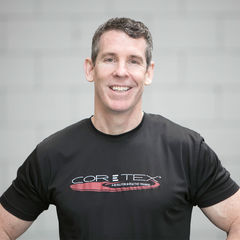




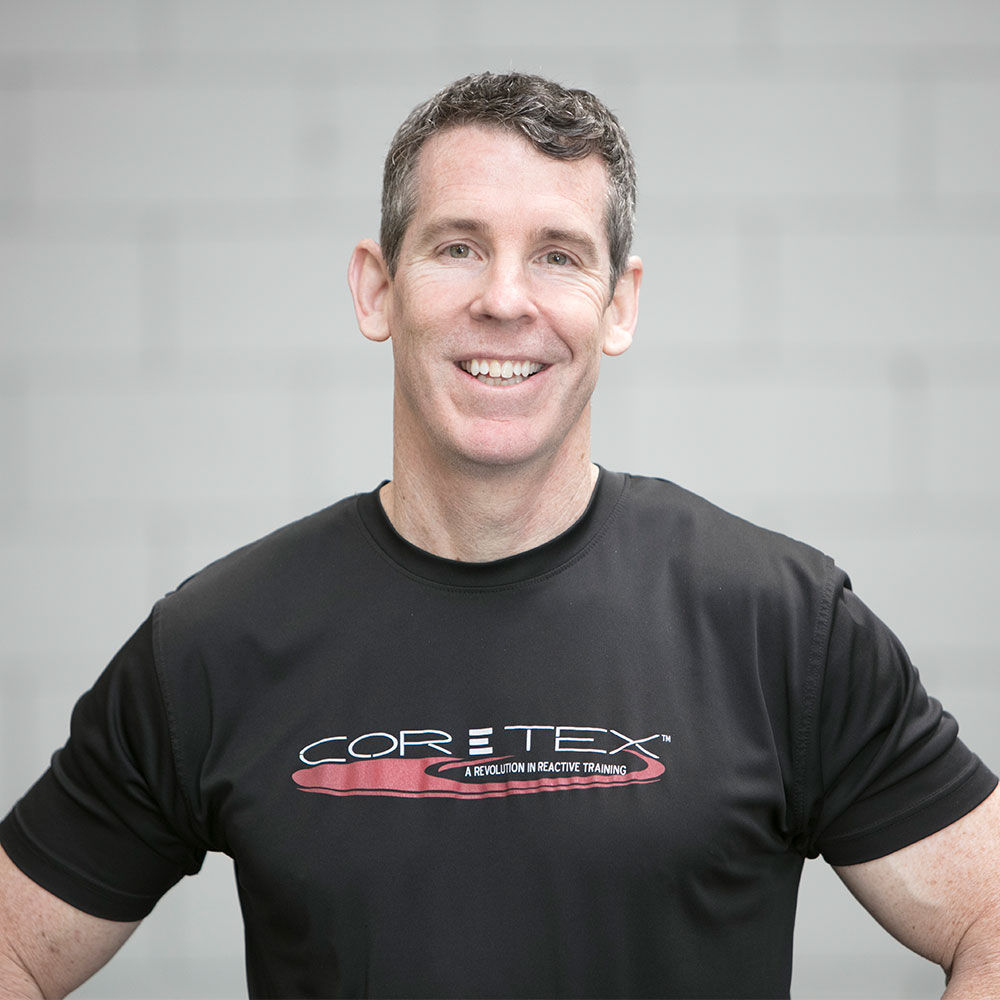 by
by 